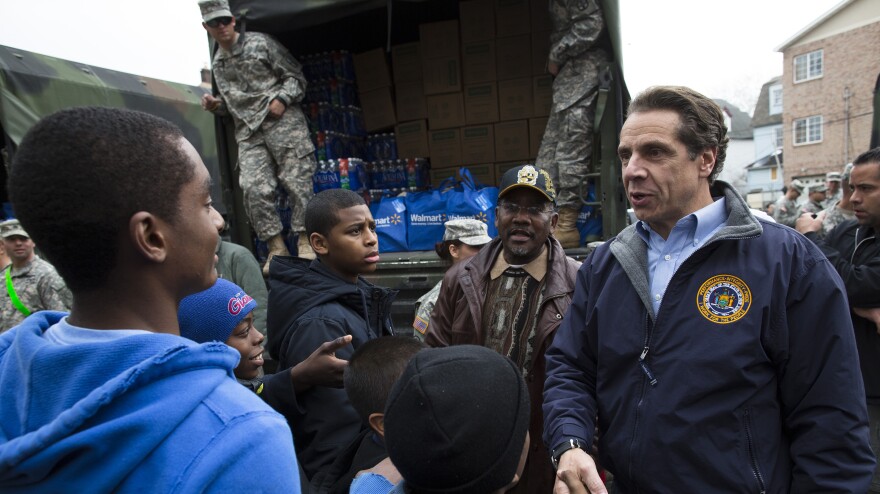Political leaders from the Mid-Atlantic and Northeast have not been shy about their intent to seek as much federal funding as possible for their storm-struck states. Damages and lost economic activity as a result of Hurricane Sandy have been estimated as high as $50 billion.
Gov. Andrew Cuomo, D-N.Y., wants $30 billion in federal assistance to help rebuild his state. This request, and others, come at a time when Congress is already consumed with reducing the deficit.
Rep. Joseph Crowley, D-N.Y., whose New York City district is among those suffering from the effects of Sandy, says what hurts New York hurts the nation.
"If New York — the region around New York in the tri-state region — turns into an economic downturn because of the effects of the storm, it will certainly affect the entire nation's economy," says Crowley. "And so I think it's in all of our interests to get the region back up and running at full throttle so that it doesn't become a drag on the rest of the country."
President Obama, who visited parts of storm-damaged New Jersey shortly after Sandy hit, is scheduled on Thursday to visit parts of New York affected by the storm.
Crowley is among those from both parties who have written to congressional leaders seeking more funding for the Federal Emergency Management Agency, which is coordinating government aid efforts. FEMA has some $7 billion now available for disaster aid. Crowley says the agency is burning through that at the rate of about $200 million to $300 million a day, much of that for short-term housing assistance.
But it's the longer-term costs that are most problematic. Cuomo says his state needs help for rebuilding housing, transportation infrastructure, even upgrading the state's electrical grid.
Some wonder, though, whether taxpayers across the nation should be on the hook for the needs of one region. Richard Sylves, a professor of disaster management at George Washington University, says it's time to look for alternative means of paying for infrastructure repairs.
"With infrastructure, you can have income streams. Bridges can charge tolls. You can have highway tolls," says Sylves. "There can be different types of use or rental fees. so it doesn't fall on the national taxpayer in Anchorage, Alaska, or Austin, Texas, or Bangor, Maine, to pay for something that is hugely concentrated in one area of the country."
If the past is any guide, there are likely to be fights in Congress over whether federal funds for rebuilding after Sandy should be offset with cuts elsewhere in the budget.
And it's far from clear how aid money should be spent. There is widespread infrastructure damage throughout the region. In New York, the city's road and subway tunnels were flooded.
Stephen Flynn, a professor at the George J. Kostas Research Institute at Northeastern University, says spending smartly is key.
"Making sure that critical components like generators are above where ... water may be coming," he says. "Can we put plugs like airbags in tunnels that we can roll out just before a storm of this size comes in place? Minimum, do we have pumps that we can quickly put in place to de-water so that we don't have a lot of extensive damage? But it really involves us looking at infrastructure through the lens of, 'What if?' "
FEMA has generally gotten high marks for its response to the storm from officials in the region. Obama, at his news conference Wednesday, says it shows that the federal government can make a difference:
"People are still going through a really tough time. The response hasn't been perfect, but it's been aggressive and strong and fast and robust, and a lot of people have been helped because of it," Obama said.
After Hurricane Katrina struck Louisiana and affected a wide swath of the Gulf Coast in 2005, the federal government spent some $120 billion rebuilding levees and infrastructure and providing housing and other needs. At this point, the tab for Sandy doesn't look quite so high, but it's clear that government leaders from the area hit by this storm are insisting on the same treatment that their counterparts received on the Gulf Coast.
Copyright 2020 NPR. To see more, visit https://www.npr.org. 9(MDAxNDQ2NDAxMDEyNzU2NzM2ODA3ZGI1ZA001))







